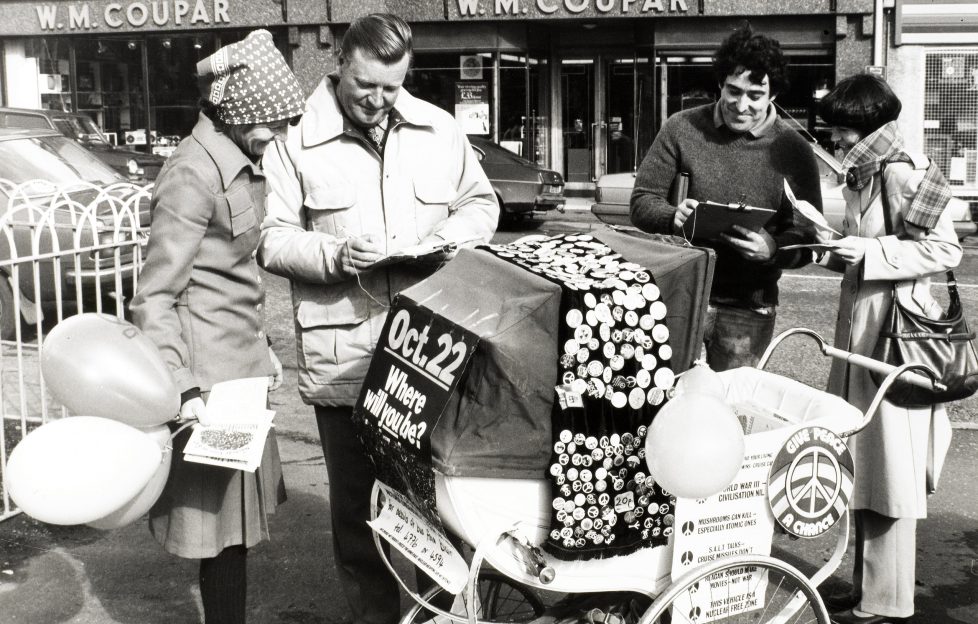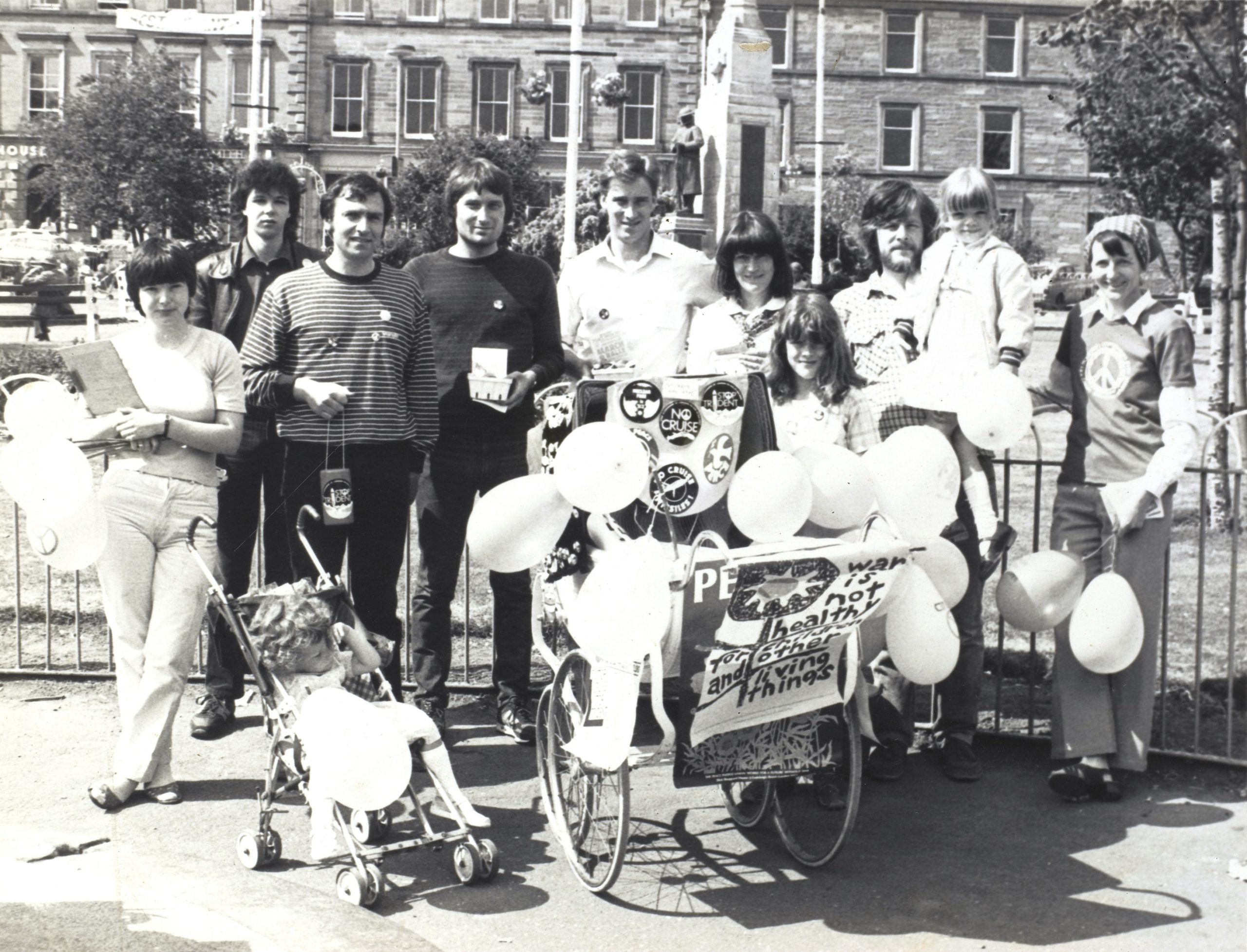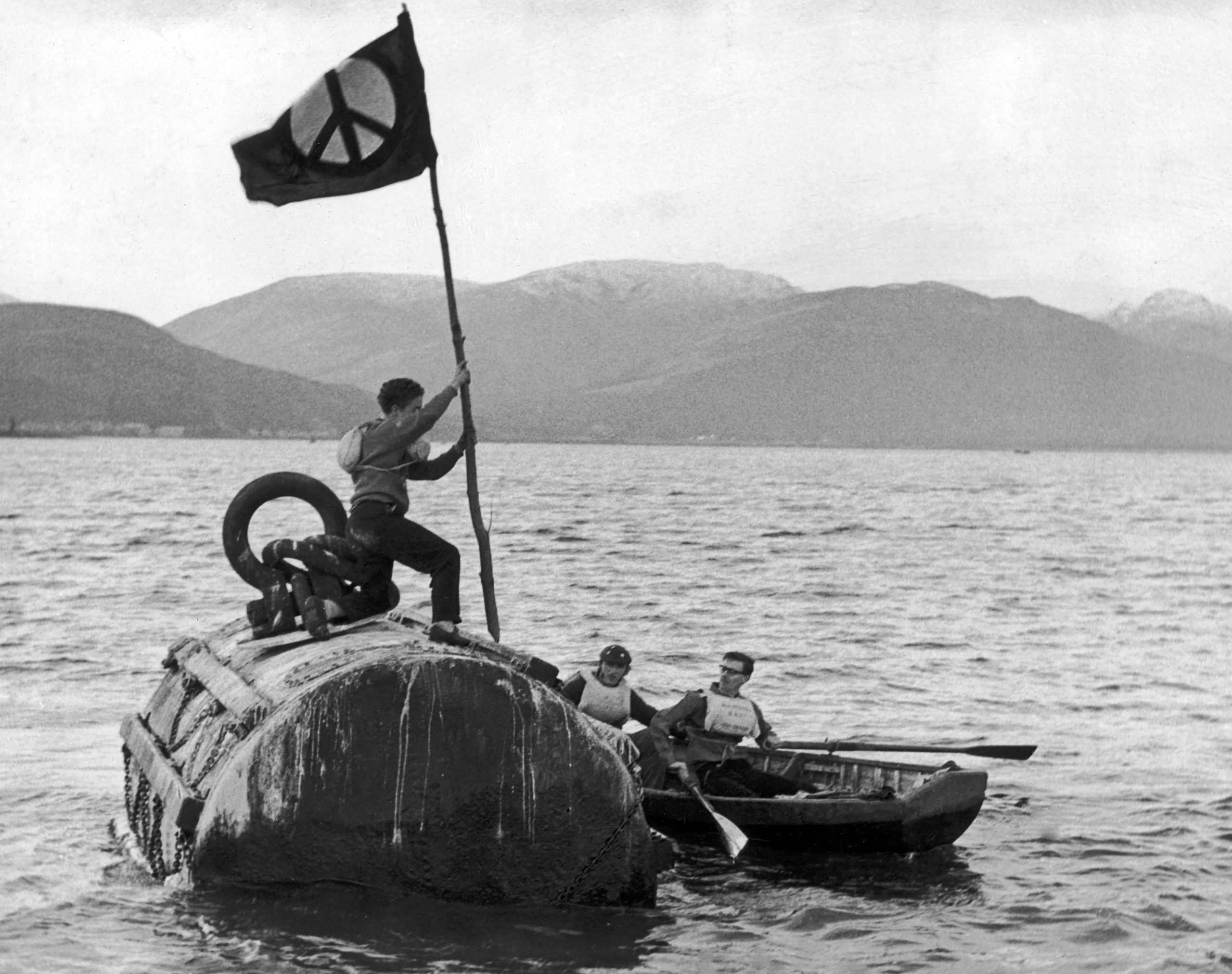
Scotland’s part in the Cold War to be told in new exhibition
Scotland’s critical position on the frontline of the Cold War will be explored in a new exhibition.
Nearly 200 objects, many on display for the first time, will be brought together to tell the stories of the Scots at the centre of this global conflict at the National Museum of Scotland.
Scotland’s geography and topography provided a useful base for Allied military preparations and research during the Cold War.
Atomic power brought jobs and investment to some of the country’s most remote areas, but as global tensions mounted the threat of attack or nuclear disaster became part of everyday life.

Campaign for Nuclear Disarmament protest Blairgowrie, c.1980s

ERKM4Y Polaris Demonstration at Holy Loch, 3rd Feb 1961
The exhibition will also draw on Scotland’s rich history of Cold War-era protest and activism.
‘From nuclear submarines to lively peace protests and observation stations perpetually monitoring for devastating attack, the Cold War permeated every aspect of life in Scotland for decades,’ said Meredith Greiling, principal curator of technology at National Museums Scotland.
‘This conflict is so often remembered on a global scale, but this thought-provoking exhibition will offer a Scottish perspective of the period, allowing Scots from all walks of life to tell their remarkable stories for the first time.’
Firsthand accounts include a young mother who decorated her daughter’s pram with Campaign for Nuclear Disarmament (CND) badges.

Steam powered nuclear power station toy, by Wilhelm Schroder and Co., 1965
A rattle made from an old laundry detergent bottle emblazoned with the CND logo was given to her baby during the Peace Marches of the early 1980s and will go on display in the exhibition.
The exhibition will also reveal the physical remains of the Cold War, the ruined bases, forgotten bunkers and decommissioned nuclear power stations still evident across the Scottish landscape.
This infrastructure became part of the fabric of local communities, none more so than the US-controlled radar base at Edzell in Angus, now commemorated with its own bespoke tartan.
TAGS

